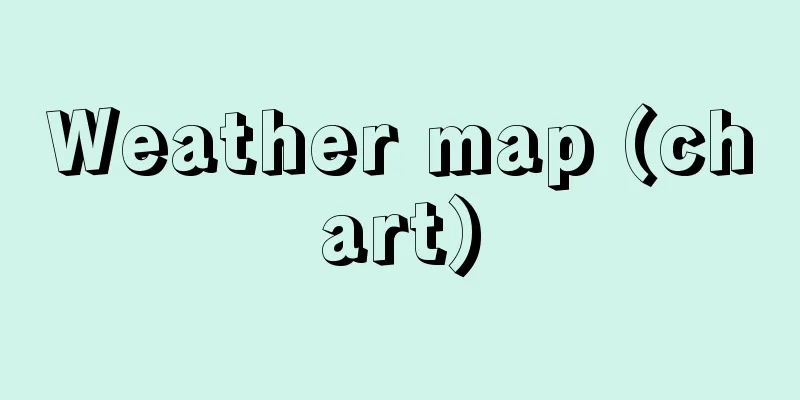Condition - Condition

|
〘noun〙 [one] A word used in music. ① The pitch of the tune. ※Sarugaku Dangi ( 1430 ) Music for weddings "Calm your mind and sing in a tune." ② Types based on the pitch of the main note of the scale. Ichikotsu -cho, Hyojo, etc. ※Makura (10th C end) 218 "The transverse flute is particularly beautiful. <omitted> The familiar teushi is especially beautiful." ③ A type of piece played at the beginning of a Bugaku or Kangen ensemble. There is no beat, and each instrument is added in order starting with the Sho . It is discordant music, with the same melody played in succession. Netori A larger-scale piece than ②. ※Genji (c. 1001-14) Maiden: "The boats of music were rowing away, and the sound of the mountain breeze was so beautiful that it was like the children were playing the tune." ④ The tuning method of instruments such as the biwa, koto, and shamisen. For example, the flat tuning of the koto and the hon-tune of the shamisen. ※The Zhuangzi Sho, a copy of the Kiyohara Kuniken manuscript (1530), Vol. 8: "Tune means to play the tune and tighten or loosen the strings to bring the matter into harmony." [2] The state of a speech expression or the state of things. ① The way words or voices are expressed. The state of a speech expression. Tone. Tone. A mnemonic. ※Ryōsokuin Honzantani-shō (around 1500), vol. 8: "When I am very sleepy, the pigeons come out and sing their song. Whether the cat cries to the south or to the north, it is the same thing."※I Am a Cat (1905-06), by Natsume Soseki, vol. 1: "In a tone of great contempt."② The momentum with which things move forward. To ride on momentum. Momentum. ※Otogi-zōshi, Monokusa-tarō (late Muromachi period), "When he asked, 'Where are you?' I replied with a cat's name, and before I could bury it, I thought I would run away."③ The state or condition of the body, thoughts, mood, etc. Feelings. Mood. ※Sakehon, Togagawa Haiken (1782), Otakeya no Dan, "Finally, I'll say ... Touch. [Modern Daily New Words Dictionary (1920)] ⑤ Market conditions. *Haiku, Basho's School of Ancient Man (1789) "A large octopus pulls in the shade of the flowers (Hairiki) The rice is sagging in February (Koshira)" Source: The Selected Edition of the Japanese Language Dictionary About the Selected Edition of the Japanese Language Dictionary Information |
|
〘名〙[一] 音楽で用いる語。① 音律の高低。※申楽談儀(1430)祝言の音曲「能々心を静め、調子を音取(ねと)りて謡ひ出べし」② 音階の主音の高さによる種類。壱越(いちこつ)調・平調(ひょうじょう)など。※枕(10C終)二一八「笛は横笛いみじうをかし。〈略〉まして聞き知りたるてうしなどは、いみじうめでたし」③ 舞楽や管弦の最初に奏する一種の曲。拍子はなく、笙(しょう)から始めて順次各楽器が加わる。同一旋律を追いかけて奏し、不協和な音楽である。音取(ねとり)②よりも大規模な曲。※源氏(1001‐14頃)乙女「楽の舟ども漕ぎまひて、調子ども奏する程の山風のひびきおもしろく、吹きあはせたるに」④ 琵琶・箏・三味線などの調弦法のこと。箏の平調子、三味線の本調子など。※清原国賢書写本荘子抄(1530)八「調とは、調子をひいて見て、緒をしめつゆるめつ、ことぢをのけつよせつする也」[二] 音声表現や物事の状態のぐあい。① 言葉や声のいいまわし。音声による表現のぐあい。語調。口調。語呂。※両足院本山谷抄(1500頃)八「いとどだに睡たい時分に鳩がででぴうちを云ぞ。其のてうしが南に啼も北に啼も同物ぞ」※吾輩は猫である(1905‐06)〈夏目漱石〉一「大に軽蔑せる調子で」② 物事の進む勢い。勢いに乗ること。はずみ。※御伽草子・物くさ太郎(室町末)「『いづくにて候ぞ』と問いければ、てうしのことばをかけ、それをふくせんその内に、逃げばやと思召」③ 身体・考え・気分などのぐあい、状態。気持。きげん。※洒落本・富賀川拝見(1782)尾竹屋の段「つひにねへいいてうしだねへ」④ ある場面、情況などを支配している雰囲気。人の言動などのほか、絵画・写真などの画面についてもいう。調子合。タッチ。〔現代日用新語辞典(1920)〕⑤ 相場の情勢。※俳諧・芭蕉門古人真蹟(1789)「大ぶりな蛸引あぐる花の陰〈配力〉 米の調子のたるむ二月〈木白〉」
出典 精選版 日本国語大辞典精選版 日本国語大辞典について 情報 |
<<: Clove (clove) - Clove (English spelling)
Recommend
Neo [village] - Neo
A village in Motosu County, western Gifu Prefectur...
Kakuzenbo Hoin
…He was the founder of the Hozoin school of spear...
Rock-spring Deutzia - Rock-spring Deutzia
It is a deciduous shrub of the Caprifoliaceae fam...
Qasim Halawi - Qasim Halawi
…Ibn al-'Awwām's (mid-12th century) Book ...
Hayami Gyoshu
Japanese painter. Born in Asakusa, Tokyo, as the ...
Isomerized sugar - isomerized sugar
A type of sugar, produced by isomerizing a portio...
Calvatia craniiformis (English spelling) Calvatia craniiformis
...It can be eaten when young. Calvatia craniifor...
Etsu (King) - Etsu
...They also played a part in the slave trade thr...
Baffin [Island] - Baffin
Located in northeastern Canada, this island is the...
External character - External character
This is the number obtained by subtracting the num...
Kisakimachi
"Town" means a section within the palace...
Shite - Do
(1) The leading role in Noh. Shite, Tamete. A per...
Maternal and Child Health Handbook - Boshitecho
〘Noun〙 The former name of the "Boshikenkotech...
Arginine Vasopressin
…Antidiuretic hormone (ADH) is one of the hormone...
tabetic ataxia
...The broad definition of ataxia includes a numb...









